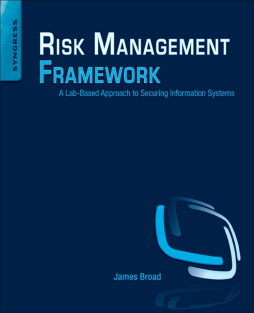
Additional Information
Book Details
Abstract
The RMF allows an organization to develop an organization-wide risk framework that reduces the resources required to authorize a systems operation. Use of the RMF will help organizations maintain compliance with not only FISMA and OMB requirements but can also be tailored to meet other compliance requirements such as Payment Card Industry (PCI) or Sarbanes Oxley (SOX). With the publishing of NIST SP 800-37 in 2010 and the move of the Intelligence Community and Department of Defense to modified versions of this process, clear implementation guidance is needed to help individuals correctly implement this process. No other publication covers this topic in the detail provided in this book or provides hands-on exercises that will enforce the topics. Examples in the book follow a fictitious organization through the RMF, allowing the reader to follow the development of proper compliance measures. Templates provided in the book allow readers to quickly implement the RMF in their organization. The need for this book continues to expand as government and non-governmental organizations build their security programs around the RMF. The companion website provides access to all of the documents, templates and examples needed to not only understand the RMF but also implement this process in the reader’s own organization.
- A comprehensive case study from initiation to decommission and disposal
- Detailed explanations of the complete RMF process and its linkage to the SDLC
- Hands on exercises to reinforce topics
- Complete linkage of the RMF to all applicable laws, regulations and publications as never seen before
"Writing for technical, administrative, and management professionals within the US government, information security consultant Broad explains the basics of the risk management framework as it pertains to the systems development life cycle of federal information technology systems, and suggests how to use this information during the development, assessment, and continuous monitoring of those systems." --Reference & Research Book News, December 2013
